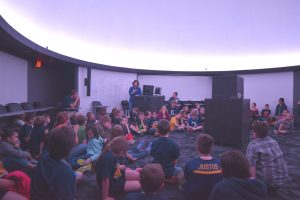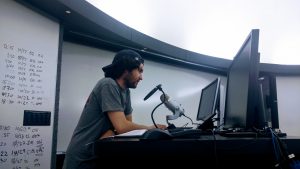Something big is happening in the sky on August 21. For the first time since 1979, a total solar eclipse will be visible from the contiguous US. Though Gettysburg will see only a partial eclipse, it is not out of the question for local sky gazers to travel to the path of totality, which occurs in a 70-mile wide strip stretching from Oregon to South Carolina.
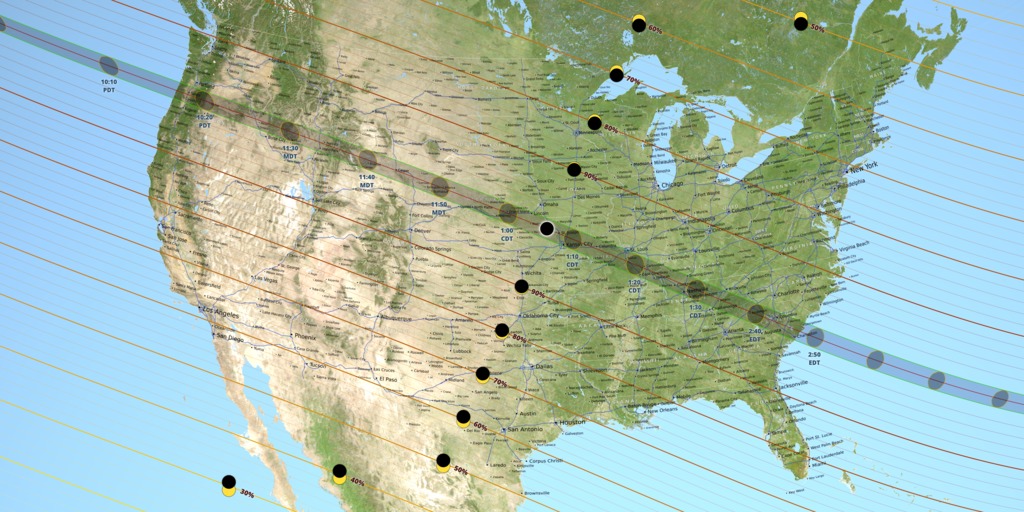
Anyone making such a trip has doubtless done a lot of research. In this post I will try to describe the event for those left behind in the Gettysburg area.
First, let’s define a few terms. A solar eclipse occurs when the moon, from the point of view of an observer on earth, covers up some or all of the sun. A lunar eclipse is when earth-based observers see the shadow of the earth covering some or all of the moon. These eclipses occur at least four times every year, sometimes more. The schedule is predictable but not regular. Thus the fact that there was a total eclipse of the sun crossing the USA from coast to coast 99 years ago does not mean that there will be another 99 years from now. The actual cycles of eclipses are both complicated and fascinating. Solar and lunar eclipses differ in their accessibility. A total lunar eclipse is visible anywhere on earth that the moon is up during the eclipse period. That’s over half the earth. In contrast a total solar eclipse can be seen only in a very limited geographic area.
One last note: while a partial eclipse is truly worth watching; it is not just a lesser version of a total one. The iconic moments of a total eclipse of the sun, such as being able to see the sun’s corona (its faintly glowing outer atmosphere) or being able to see stars in the daytime, only occur during totality. They are not visible during a partial eclipse, such as Gettysburg will experience. Even a small portion of the sun is extremely bright!
Locally the show will get under way at 1:17 PM EDT with first contact. That’s when the moon begins to “take a bite” out of the sun.
Now here’s the safety part: it is not safe to look at the sun even when it’s partially covered up. Pointing binoculars or a telescope at the sun (without knowing exactly how to prepare and equip it) can lead to instant eye damage. Get yourself some “eclipse glasses.” You could order online from a reputable source; I’ve also seen them locally at Lowes of Waynesboro. Instead of or in addition to the eclipse glasses you can make yourself a pinhole projector. It’s cheap and it works.
Back to the local schedule. From 1:17 on the moon will cover more and more of the sun, until maximum eclipse at 2:41 PM, when the 79% of the sun (by area) will be covered. The sight will look like this through your filter glasses or on your pinhole projection:

Notice how the moon and sun are about the same size. “But wait!” you say, “isn’t the sun a lot bigger than the moon?” Yes, about 400 times bigger; the moon happens to be about 400 times closer.
After 2:41 the moon’s disk will slowly slide by and the area of the sun visible will increase. With last contact at 3:59, the partial eclipse will be over.
How will weather affect viewing? In order to actually observe the sun and moon as depicted in the image above, the sky will need to be clear enough to see the sun. If it’s overcast that won’t happen, though you may still notice some darkening of the skies around the time of maximum eclipse.
You may also be wondering about events in the environment. Will it get dark? Will birds roost? That’s a good question. 21% of the sun is still very bright, so it won’t get dark in the Gettysburg area, but you may well notice some changes around you. Some of you may remember the eclipse of May 1994. It was an annular eclipse from some parts of the US, though it was partial (83%) here in south-central PA. I was fortunate enough to see this one from Gettysburg, and near maximum eclipse the light definitely looked odd. I even saw the partially eclipsed sun projected by natural “pinholes” between tree leaves. Birds grew quiet and a breeze blew up. It was a wonderful afternoon, though it was unmistakably daylight.
Finally, you may be interested in future total eclipses of the sun in the US. We don’t have to wait as long this time. The total solar eclipse of April 8, 2024, has a path that cuts from Texas to Maine and includes a bit of northwestern Pennsylvania. If, however, you want to view a total eclipse of the sun from your backyard in Adams County, you’ll need to find some way of living until September 12, 2444.
At Gettysburg College we have events planned before and during the eclipse. On August 13 and 14 the Hatter Planetarium will present “Eclipse Across America” to help get you ready. During the eclipse itself there will be a public event at the Gettysburg College Observatory, hosted by Dr. Jackie Milingo and Dr. Craig Foltz. Your humble scribe (Ian Clarke) plans to be somewhere in the path of totality on that day. Clear skies, folks!

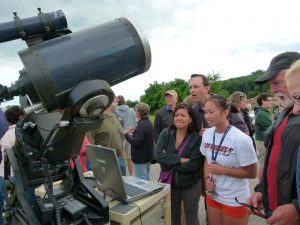
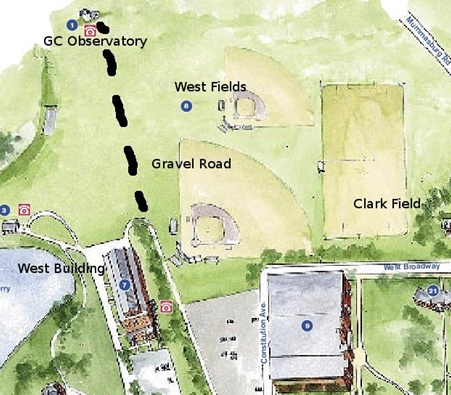
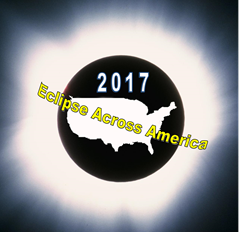 Sunday, August 13, 2:30 and 4:00 PM
Sunday, August 13, 2:30 and 4:00 PM